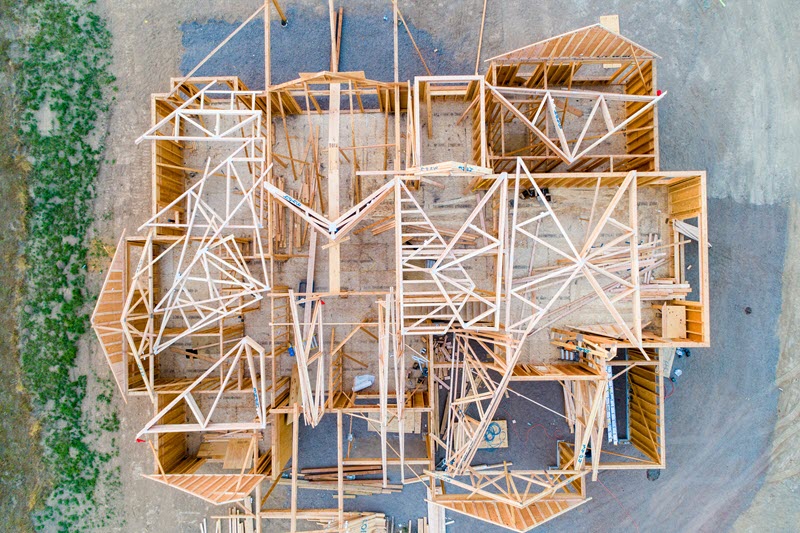Planning tool
Expected level of development
Australian Curriculum Mathematics V9: AC9M7M01
Numeracy Progression: Understanding geometric properties: P6, Understanding units of measurement: P9
At this level, students should be familiar with the concept of area and how to find the area of a rectangle. They will extend this knowledge to find the formulas for the areas of other shapes, such as a parallelogram and triangles.
There are many activities that can be used to reinforce these concepts, such as drawing rectangles with the same area and calculating their perimeters.
The connection between the areas of rectangles, parallelograms and triangles can be investigated through cutting rectangles in different ways. Through this activity the formulas will be discovered and understood; students will then be able to solve problems and use appropriate units of measurement.
It is important that students are shown non-regular shapes and in different orientations.
This topic has connections to operations with:
- decimals and place value
- forming, using and substituting formulas to solve problems
- an understanding of square numbers.
There are also connections to be made with the use of space in Health and Physical Education, and measurement in Science and design technology projects.
Teaching and learning summary:
- Build on students’ understanding of the area of rectangles.
- Introduce the concept of perpendicular height.
- Use perpendicular height to develop the formula for the area of parallelograms.
- Demonstrate that the area of a triangle is half the area of the rectangle around it and use this to derive the formula for the area of a triangle.
- Use these formulas to solve simple area problems.

Students:
- identify the correct formula to find the area of a rectangle and a parallelogram
- apply the formula to find the area of a triangle
- recognise the perpendicular height of a triangle or parallelogram
- solve simple problems involving the area of a plane shape
- justify their approach when solving a problem.
Some students may:
- confuse area and perimeter.
- use the incorrect units.
- use the incorrect side as the base of the triangle.
- use a side (slant) instead of the perpendicular height.
These misconceptions can be addressed through explicit teaching and multiple worked examples and by using concrete materials.
The Learning from home activities are designed to be used flexibly by teachers, parents and carers, as well as the students themselves. They can be used in a number of ways including to consolidate and extend learning done at school or for home schooling.
Learning intention
- I am learning to find the area and perimeter of shapes (parallelograms, triangles, rectangles).
- I will apply the formula to calculate the area of various sections of my home.
Why are we learning about this?
Imagine designing a house without knowing how to make our ideas and rough drawings into concrete, accurate and measurable plans for a builder to follow. By understanding and acquiring knowledge of when to apply the correct formula when measuring the outside or inside of a given space, we can bring our ideas to real life.
What to do
- Work out the area of your bedroom and compare it to the rest of your house. Represent your ideas in a floor plan and calculate the percentage your bedroom takes up of the whole house.

- Work out the perimeter and area of your bedroom, yard and house and compare these calculations.
Success criteria
- I can identify and apply the correct formula for the area of a rectangle, a square and a parallelogram.
- I can apply the formula to find the area of a triangle.
- I can calculate the perimeter of a given shape.
- I can solve problems involving the area of a plane shape.
Please note: This site contains links to websites not controlled by the Australian Government or ESA. More information here.
Teaching strategies
A collection of evidence-based teaching strategies applicable to this topic. Note we have not included an exhaustive list and acknowledge that some strategies such as differentiation apply to all topics. The selected teaching strategies are suggested as particularly relevant, however you may decide to include other strategies as well.
-

Concrete, Representational, Abstract (CRA model)
The CRA model is a three-phased approach where students move from concrete or virtual manipulatives, to making visual representations and on to using symbolic notation.
Go to resource -

Explicit teaching
It provides strategies for the teacher which help them to design and present instruction and learning to students in a meaningful way.
Go to resource -

Differentiated teaching
Differentiation involves teachers creating lessons that are accessible and challenging for all students.
Go to resource -

Mathematics investigation
By giving students meaningful problems to solve they are engaged and can apply their learning, thereby deepening their understanding.
Go to resource
Teaching resources
A range of resources to support you to build your student's understanding of these concepts, their skills and procedures. The resources incorporate a variety of teaching strategies.
-

Triangles
A series of lessons that discover and apply the rule for the area of a triangle.
Go to resource -

Using units of measurement
This resource discusses teaching units of measurement by using practical, contextualised examples.
Go to resource -

Teacher guide: Year 6 area and perimeter
A guide for teaching Year 6 and Year 7 students about area and perimeter.
Go to resource
Assessment
By the end of Year 7, students can solve problems about area using established formulas and appropriate units for triangles and parallelograms.
-

Mathematics Year 7 work sample portfolio – ACARA
Refer to work sample 8, Measurement investigation to assess students' knowledge and understanding of area and perimeter.
Go to resource -

Perimeter and area
Here you will find a number of activities looking at perimeter and area – from squares and rectangles to circles.
Go to resource








